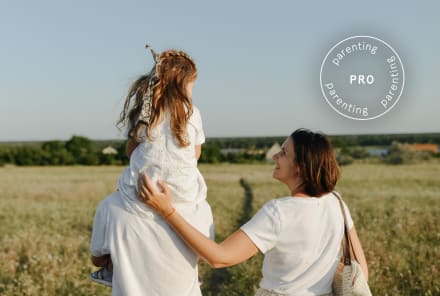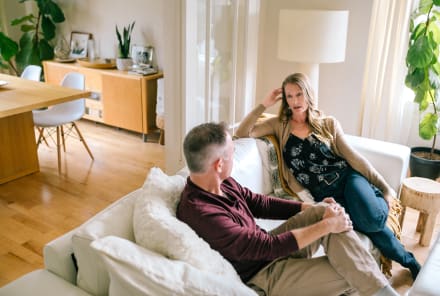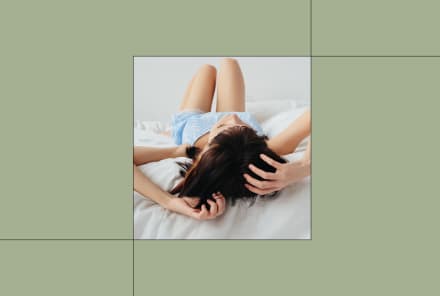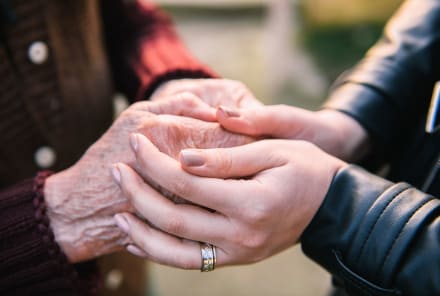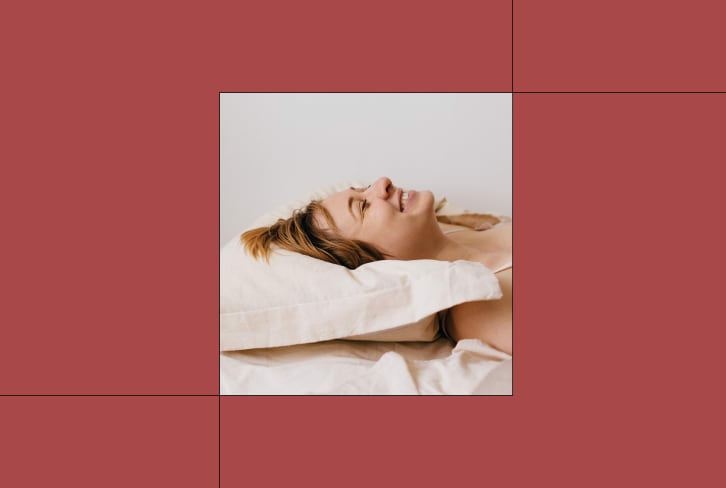Advertisement
Which Attachment Styles Are Most Compatible In Relationships?

Harlow radiates strong self-esteem and a secure attachment style. When she first connected with Tobi, she thought they were a match made in heaven. Tobi was intelligent, hardworking, and a great cook. Although Tobi wasn't the most demonstrative or open person she'd dated, she figured they'd become more connected in time. But as their relationship evolved, it was clear that Tobi was emotionally unavailable. Harlow couldn't figure out why Tobi hid behind defensive walls, but it had become obvious that a dismissive-avoidant attachment style was a key issue. Harlow was sad about parting ways, but she knew she wasn't interested in chasing down a partner to get her emotional needs met.
As this story shows, attachment styles can be a helpful way of understanding not only your own behavior in relationships—but also determining compatibility with others.
Why it's important to assess attachment styles.
A person's attachment style forms early in life based on the degree of attunement (feeling seen, safe, understood, and loved) experienced as a small child. There are four attachment styles, which include one secure attachment style and three insecure types commonly known as anxious attachment (aka anxious-preoccupied), avoidant attachment (aka dismissive-avoidant), and fearful-avoidant attachment (aka disorganized).
Unless resolved through self-work, attachment issues persist through adulthood, and the three insecure attachment types can lead to dysfunction and chaos in intimate, family, and social relationships. We can develop a secure attachment style by engaging in solid self-work whether we are in or out of a romantic partnership. That said, some attachment styles are not a good fit and tend to make self-evolution and relationship-evolution difficult—if not impossible.
So, when you're looking for a partner, you'll want to know your personal attachment style and have enough information to spot a potential partner's attachment style. By slowing down to detect a new partner's attachment style early on, you can stop an unhealthy partnership before it really gets going. And if the mix is a good one, you might find yourself in the most connected relationship of your life.
The four attachment styles.
The more familiar you are with your attachment style—and those of important people in your life—the more you'll be likely to accurately detect a potential partner's attachment style. Your attachment style might fall neatly into one of the four styles listed below, or you might feel that you have more of a blended style. (Here's an attachment style quiz if you need help figuring out which one is yours.)
Secure attachment
Individuals with a secure attachment style tend to be "rocks" in a relationship. They are generally self-aware, emotionally available, confident in their relationship abilities, and grounded, in addition to having high emotional intelligence. The securely attached person is able to be vulnerable and intimately connected. Although those who are securely attached can surely face relationship challenges, the struggles are usually overcome with focused honesty, compassion, and respect.
Anxious attachment
Those with an anxious attachment style tend to vacillate between clinginess and fear in their romantic relationships. They are often preoccupied with their relationships and fear being abandoned or rejected. Poor self-regulation (emotional highs and lows) and low self-esteem are common. The anxiously attached person feels deeply flawed but often elevates a partner to "perfect" status. Often hyper-dependent, the anxiously attached person can become angry or reactive if upset or unnerved.
Fearful-avoidant attachment
A relationship with a fearful-avoidant type can feel like walking on eggshells. Individuals with this attachment style often want a relationship but are unconsciously very fearful of being close. As a result, a tug-of-war dynamic keeps the relationship from being stable, safe, and connected. Those with a fearful-avoidant style often have low self-esteem and can sometimes have little respect for their partners. Unpredictability and drama, both internal and external, are the hallmarks of the fearful-avoidant style.
Dismissive-avoidant attachment
Being in a relationship with a person who has a dismissive-avoidant style (often called simply avoidant attachment as shorthand) can feel very disconnected and isolating. Those with this style often seem to have strong self-esteem and a very independent streak. However, their hyper-independence and strong defense mechanisms make it difficult to connect on an intimate level. Most comfortable with superficial hookups or short-term relationships, any long-term connections tend to be detached and self-focused in nature. An attitude of aloof superiority can often be evident in those with a dismissive-avoidant style.
Which attachment styles make a good match?
Well matched is a matter of perspective and personal taste. For example, an outsider may feel that two anxious types are "clingy" and self-possessed, yet that opinion may be different from the reality the "clingy" partners experience. That said, certain attachment style pairings maximize self-growth, some foster little or no self-growth, and others can create significant harm.
Although every situation is unique, the general guidelines below will help you pay more attention to the attachment style pairings that may be great "green light" fits, those that you might want to approach with "yellow light" caution, and those "red light" dynamics that make for significant challenges.
Secure with Secure: Green light
Those with a secure attachment style tend to be strong, secure, and stable in their relationships—especially when their partners also have a secure attachment style. When two securely attached individuals connect, the stage is set for a stable, loving connection that benefits both partners in the short term and long term.
Secure with Anxious: Green light/Yellow light
Because of their internal sense of healthy, love-based stability, those with a secure attachment style tend to fare best in relationships regardless of the attachment style of their partner. When a secure partner connects with an individual who has an anxious attachment style, the anxious person often feels safe and loved. And when the anxiously attached partner does self-work, the relationship can become very strong and secure in the long term. However, if the anxiously attached person does not work on healing the root causes of the anxious attachment, even a securely attached individual may tire out and move on.
Secure with Fearful-Avoidant: Green light/Yellow light
A fearful-avoidant individual often benefits from the securely attached person's nonreactive, stable energy. At the same time, it's important for those with a secure attachment style to avoid taking the role of "rescuing" or "fixing" a partner who is not securely attached. Although a person with a secure attachment style can certainly be a grounding force, the fearful-avoidant person must do their own healing work to avoid wearing out—and wearing down—the securely attached partner.
Secure with Dismissive-Avoidant: Red light
The securely attached person is often not drawn to a dismissive-avoidant type. Given the "lone individual" attitude of this type, the securely attached person may ignore or even recoil from the emotionally distant dismissive-avoidant type. As the securely attached individual truly does want to connect, the dismissive-avoidant type is often too detached to spark interest. The dismissive-avoidant person themselves may fare well with a securely attached individual, but the deep aloofness may present an insurmountable chasm.
Anxious with Anxious: Yellow light
When both partners have an anxious attachment style, the relationship can often limp along based on mutual fear and need. In such cases, as "safe" as partners might feel, unaddressed wounds often silently fester and manifest as anxiety and stress. However, it's important to note that two anxiously attached individuals who are working on self-development can assuredly create strong, loving mutually secure attachment styles given their "I get you" bond.
Anxious with Fearful-Avoidant: Yellow light
Those with anxious attachment styles tend to not mix very well with the fearful-avoidant type due to internal fears that are easily triggered. The fearful-avoidant type will generally not do well with an anxious partner; the fearful-avoidant person's chaotic behaviors will exacerbate anxiously attached person's inner wounds. However, if a fearful-avoidant individual who is engaged in solid self-work connects with an anxiously attached person who is also mindful of personal wounds and needs, the relationship can develop slowly but surely in a safe, lovingly attached way that benefits both partners. However, if both partners aren't working to create secure attachments, the anxiously attached person can become more dysregulated, and the fearful-avoidant type can become more unpredictable and avoidant.
Anxious with Dismissive-Avoidant: Red light
The anxiously attached individual does not pair well with the dismissive-avoidant type. The self-isolated ways of the dismissive-avoidant partner will constantly leave the anxiously attached partner feeling unloved, unsafe, and unwanted. Of course, if both people are working on their inner issues, positive changes can occur, but this tends to be a difficult match!
Fearful-Avoidant with Fearful-Avoidant: Yellow light
Due to the often-combustible, fearful nature of the fearful-avoidant type, explosions can occur when two fearful-avoidant types encounter friction; this setup will tend to worsen both partners' wounds. However, when two fearful-avoidant types are both engaged in self-work, mindful attention to each partner's inner wounds can be grounds for healing and intimate connection.
Fearful-Avoidant with Dismissive-Avoidant: Yellow light
The fearful-avoidant individual may gravitate toward the aloof, distant style of the dismissive-avoidant individual. In return, the dismissive-avoidant individual may be, at times, intrigued by the fearful-avoidant individual's dramatic flair. However, when in the thick of the relationship, the dismissive-avoidant type may simply walk away from the abundance of drama and internal conflict that the fearful-avoidant type brings. That said, a fearful-avoidant individual and dismissive-avoidant individual can create a positive, hard-won connection when both are doing their inner work.
Dismissive-Avoidant with Dismissive-Avoidant: Yellow light
Interestingly, two dismissive-avoidant partners may do fine together because neither person is really invested in being emotionally intimate and deeply connected. On the downside, two dismissive-avoidant partners may be so familiar with distant relationships that they simply don't invest in healing the inner wounds that perpetuate the shutdown, aloof attachment style.
The bottom line.
When tuning in to attachment styles, remember that a potential partner's desire to evolve is a significant factor. When two partners are mutually invested in creating positive change, a secure attachment style can be developed in the context of the relationship. When two people are deeply focused on being more self-aware, other-aware, loving, and attuned, healing and positive change result.
Watch Next
Enjoy some of our favorite clips from classes
Enjoy some of our favorite clips from classes
What Is Meditation?
Mindfulness/Spirituality | Light Watkins
Box Breathing
Mindfulness/Spirituality | Gwen Dittmar
What Breathwork Can Address
Mindfulness/Spirituality | Gwen Dittmar
The 8 Limbs of Yoga - What is Asana?
Yoga | Caley Alyssa
Two Standing Postures to Open Up Tight Hips
Yoga | Caley Alyssa
How Plants Can Optimize Athletic Performance
Nutrition | Rich Roll
What to Eat Before a Workout
Nutrition | Rich Roll
How Ayurveda Helps Us Navigate Modern Life
Nutrition | Sahara Rose
Messages About Love & Relationships
Love & Relationships | Esther Perel
Love Languages
Love & Relationships | Esther Perel

